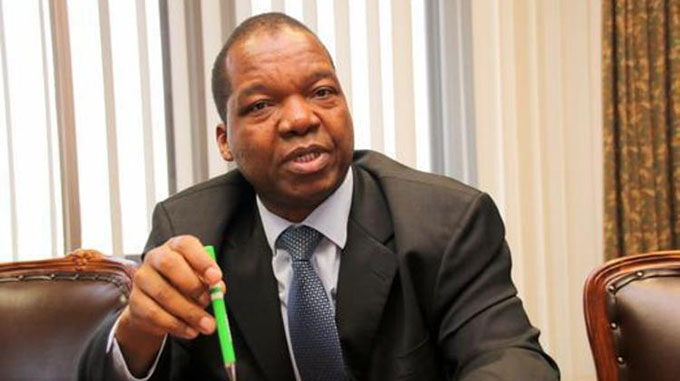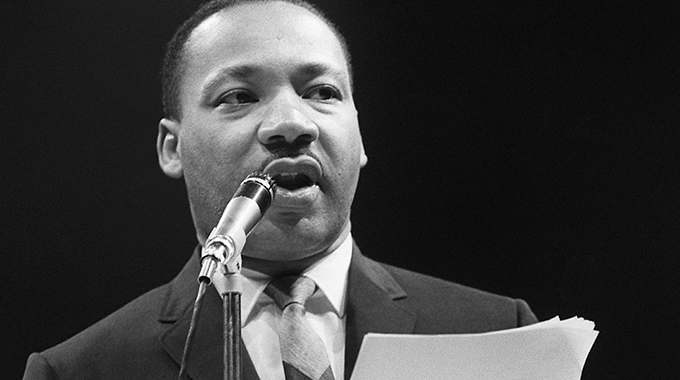Awakening the great speaker within
Elliot Ziwira @the Bookstore
In a world where exhibition of skills and competencies are in vogue, aided by the proliferation of technologically enhanced platforms, with everyone chasing after receding dreams and individual concentration span not going beyond 10 minutes, speaking becomes not only an art, but a way of life.
Oftentimes we are called upon to speak on our own behalf or on behalf of others, which calls for competency and conviction. At funerals, weddings, religious functions, business forums or any other public gatherings, speaking skills are called upon and tested.
Because it is inevitable, speaking is a life skill that one can only take for granted at one’s peril. There is a great speaker lying idle in you, please give him or her chance to come out. The world waits with bated breath for that special guest.
Due to habitual foibles, we usually write what we speak, and that also is an extension of our own attitudes and emotions. It is, therefore, pertinent that we develop speaking as a skill to strengthen our resolve in fostering strong relations through oral and written communication.
Gentle reader, whether you want it or not, you need to develop yourself as a speaker, which is why I find Charlton C. Tsodzo’s book “Stand Speak Convince them: Mastering the Art of Convincing Audiences” (2018) published by Maendeleo Inc, an apt read. The book is available in hard and soft copies.
An academic, entrepreneur, moderator and speaking coach conference facilitator, Tsodzo has two other titles; “Bhora Mberi: Kukunda chete” (2013) and “PhDemystified: Stuff you definitely should know about doing a PhD” (2014).
Tsodzo takes the reader in the speaker’s gait to the podium, reveals his/her inner turmoil, questions his/her integrity, interprets the body language exhibited and puts influences on show to the test, all in measured doses in the fashion of the surgeon. Through interactive language and visuals, the writer explores the art of speaking and posits the essence of conviction in speaker-audience engagements.
In a fast paced world, where everything is measured in terms of time and colour of money, it is, indeed, imperative that the speaker knows his/her purpose and what he/she intends to achieve from the speaking engagement, and it is this that Tsodzo seeks to conscientise the reader on.
Drawing inspiration from great speakers like Martin Luther King Jnr, Barack Obama, John C. Maxwell, Booker T. Washington, Barbara Corcoran, Adolf Hitler, Mark Twain and Thabo Mbeki among others to emphasise that speaking is an art that can be learned and perfected.
So, who is called the speaker, and how did it all begin? It is interesting to note how Tsodzo traces the history of the art of public speaking, as he writes:
“The ‘formal’ recognition of public speaking (and oratory) as an important art or discipline concerned with convincing and influencing people can be traced way back to 5th century classical Greece.”
Among top rhetoricians of the period between 500BC and 400BC were the four philosophers known as the Fantastic Four; Aspasia of Miletus, the “mother of rhetoric”, Plato, Aristotle and Socrates.
The writer articulates that the speaker is the one who initiates the speaking process, so he or she should have all or most of the following:
- The communication purpose (message)
- Has knowledge of the subject
- Command of speech skills
- Attitudes towards self, listener or subject
- Has command of words and body language
- Confidence in the speech
- Has a good eye contact.
The speaker, as Tsodzo points out, is the one with the message, therefore, he/she plays a pivotal role in a speech situation, as he/she influences the process in the following ways:
- She/he has to achieve some purpose or attain a goal
- Has to be sociable or friendly
- She/he seeks to alter the listener’s cherished values or move him to an action
- She/he has to reinforce an existing attitude
- Has to resolve a conflict
- Poses a question requiring a specific answer
- Has to explain a problem
- Tests an idea
- Establishes or maintains a status.
The speaker’s knowledge of the subject and command of speech skills affect the nature of what he/she intends to express. Those around him/her can easily tell whether they know what they are saying or not. One is likely to lose confidence if purported knowledge on a particular subject is shallow.
Thorough knowledge of the subject will help in communicating clearly and conveying the beliefs, ideas and values that are considered dear. It will also help in the presentation of ideas logically and coherently.
Besides knowledge of the subject, ability to use voice and body language will go a long way in the expression of ideas both orally and visually.
Citing real life examples, the communication expert warns against plagiarism and its consequences, which he says is not only bad, but leads to humiliation if one is caught out.
The book also highlights common misconceptions on the use of the phrase “All protocols observed?” which he said is “commonplace across many African countries as well as in some Caribbean countries.”
While many people find the issue of observing protocol tedious or problematic, Tsodzo concedes that it is, indeed, an issue, which, however, should be cautiously tackled. Citing Caroline Nderitu and Antony Gales, who are of the belief that saying all protocol is observed when it is not, is misleadingly wrong; the author advises: “On a personal note, I feel speakers (especially guest speakers) are generally overburdened with the imperative to observe protocol to the letter.
“I usually recommend to organisers of events that the hosts of the event take the role on the event programme to observe protocol as part of the introductory and welcome remarks…That way protocol would have been observed in the correct way.”
However, although there may not be an all-encompassing template to observe protocol, “beyond Africa and some Caribbean countries, it’s not as entrenched in any other parts of the world.”
The book also purveys the emotive aspect of attitude on speaking engagements. What one thinks about something or someone is considered as their attitude and it has a bearing on what is said and how it is said. Attitude towards self, listeners and subject affects the outcome of the speech process in a two-fold way. The information that is conveyed is a product of the speaker’s attitude, which may either be negative or positive.
Attitude towards the self can really affect the speech in many ways. If the speaker considers himself/herself to be below average, unsuccessful and disliked, he/she will not only perform dismally because of projected low self-esteem, but he/she will became subdued, moody and closed-up.
A negative attitude often results in ideas advanced in a random or confused manner. The voice becomes unsteady, the body stiff and gaze shifted away from the audience. All this robs one of confidence, which is the major weapon in effective speaking, without which doom lurks in the vicinity.
A positive attitude on the other hand appeals more to the audience, as fear and reluctance are replaced by self-assurance.
The message or subject is the reason for communicating in the first place, therefore, its impartation should not be sallied by the speaker’s attitude. Attitude colours and conditions the ideas to be presented and the language in which they are expressed.
A subject may be seen as boring, interesting, pertinent, crucial, trivial, true or false depending on the speaker’s attitude and presentation.
The way one regards the audiences influences behavior. Attitude can easily be discerned from the way one talks. Whatever one may be trying to conceal is usually read through facial expressions. Facial expressions will betray the speaker in his/her quest to express himself/herself. Feelings of contempt, impatience, love, hurt and annoyance cannot be concealed easily, as speaking behavior will let the speaker down.
Tsodzo concedes with Susan Krauss Whitbourne in putting micro expressions in context thus:
“Susan Krauss Whitbourne again posits that there are parts of the face that reflect what are called ‘display rules’, which play an important part in letting others know how one is feeling or even how they might be thinking”.
Gestures and body language, therefore, are major components of the communication process as such they should be used cautiously and effectively. We say more non-verbally than we say verbally.
Success in winning arguments, inspiring others, confidence or promoting action depends upon the estimate of one’s worth and competency. The speaker should make it clear from the onset what exactly he/she is worth.
Listeners are usually impatient; hence, a good speaker must really be worth their time. With the concentration span lapsing between 7 and 10 minutes at a time, the well-researched book gives tips on how to tread the steep public speaking terrain.
Reputable speakers are of good character, trustworthy, alert, friendly, dress well and sociable with a thorough knowledge of their subjects. When given a topic beforehand, there is need to always research before the speaker embarrasses himself/herself in front of the audience, eat well, be wary of “the curse of the vegetable rainforest between (his/her ) teeth”, and deliver the speech like their life depends on it, as it sure does.
Because listeners are at liberty to avoid the listening task in preference to mere hearing, the competent speaker should draw their attention through effective use of introductions. Good introductions do not always state the obvious. You may start with a question, a quotation or statistics, before you introduce yourself and tell the audience why you are standing before them.
Statistics and quotations are powerful openers. As Brendan Francis notes: “A quotation in a speech, article or book is like a rifle in the hands of an infantryman; it speaks with authority”.
Attention should then be sustained through a well sequenced chain of ideas in the body. Listeners should be reminded why they should listen by being told what they want to hear first before delving into the unknown.
The speaker must learn to gauge the mood of the audience by maintaining eye contact and taking a cue from the tell-tale signs of boredom, annoyance and impatience.
A joke or two along the way may be the prescription that the doctor ordered, but one should avoid overdoing it, the author warns. Listeners can also be involved through questions as this does not only ensure listening compliance, but will also build confidence.
The competent speaker should remain in control of the process. He/she is the one to remodel perceptions of the audience and not the other way round, refuse to be intimidated by individuals, who may want to throw spanners in his/her wheel of success.
In conclusion revisit major points for this is what drives to a preferable action. People usually remember what is said last. One may also close with a question, statistics or a quotation.
Verily, there is a lot to learn, and a lot more to be achieved in public speaking.
Dare to be different? Find yourself a copy of Charlton C. Tsodzo’s “Stand Speak Convince them: Mastering the Art of Convincing Audiences” (2018) and start speaking now! It is, indeed, a worthwhile, informative and evocative read.









Comments